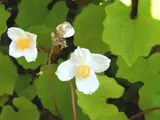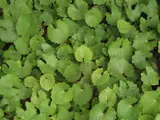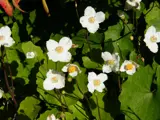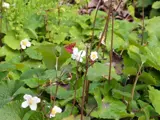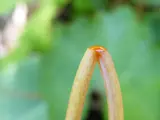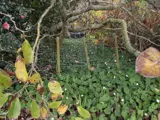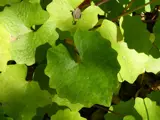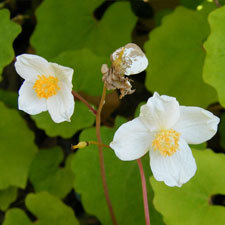 Snow poppy
Snow poppy
Common name: Snow poppy
Botanical name: Eomecon chionantha
Management programme: Advisory
Originally from China. The rhizome of snow poppy contains a molluscicide – a compound found in snail or slug bait – and has been used to eliminate a freshwater snail pest overseas.
Why is it a pest?
- Smothers low growing vegetation and restricts new growth of seedlings.
- Is a threat to the understorey of native bush
- Fragments can easily be transported around in soil through garden waste and dumping.
- Very difficult to achieve total control due to the extensive underground rhizome system.
Where is it found?
- Forest floors, gardens and native bush areas.
- Thought to be scattered throughout the Bay of Plenty.
What does it look like?
- Snow poppy is a low growing, ground cover.
- Leaves have scalloped edges and are leathery to the touch and have waxy margins.
- Flowers appear in spring and are pure white, have four petals and bright golden stamens. Can be up to 4cm wide. Seeds are wind dispersed.
- Rhizomes for a dense net underground, making it very difficult to control.
- Stems ooze an orange sap if crushed or broken.
What are the rules?
Advisory
Council does not enforce the control of advisory species. It is landowner/occupier responsibility to manage these pests. Council may provide advice on how to manage or control advisory species if required.
How do you get rid of it?
Dig out rhizomes (year round) of small infestations.
If digging out the plants and root material, use a sieve and work the soil through it. This will catch any rhizome fragments that you may have missed during the digging.
Dispose of all plant material at the refuse station in general waste.
Images

